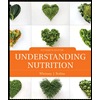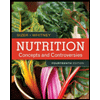Vincent Miller, a 62-year-old accountant, has had a "drinking problem" throughout most of his adult life. He drinks about a half-case of beer each day. He has lost several jobs over the years for drinking at the workplace or showing up for work drunk. He lost his driver's license for drunk-driving, and his drinking has placed a considerable strain on his marriage. He has tried several self-help programs as well as Alcoholic's Anonymous, all with little success. He has been hospitalized on several occasions over the years. Vincent has a severe tremor in his hands (probably a result of excessive alcohol intake), which makes it very difficult for him to use a spoon, fork, and knife to eat. It's your first day on the job as an occupational therapist, and you are consulted by his physician to see if there is any way to help Vincent use eating utensils. Not knowing anything about him, you open up his past medical records, which, incidentally, are quite thick. First Hospitalization: You note that Vincent was hospitalized at age 32 with a complaint of vomiting up blood after a drinking binge that lasted seven days and was marked by excessive and repeated vomiting episodes. The vomitus was bright red. The hospital chart lists a diagnosis of "Upper GI bleed" due to a Mallory-Weiss tear. You look up "Mallory-Weiss tear" in an internal medicine textbook and see that it is defined as "a longitudinal tear in the mucosa at the gastroesophageal junction -- i.e. in the area of the lower esophageal sphincter -- caused by repeated vomiting." At age 36, Vincent was hospitalized again, this time with complaints of abdominal pain in the upper epigastric region (i.e. just below the xiphoid process of the sternum) and "coffee-grounds" emesis. He also complained of "heartburn" (a burning sensation in the area of the sternum) which was partially relieved with antacids. A diagnosis of "upper GI bleed due to gastritis and reflux esophagitis" is noted in the chart. 1. What is causing the pain in the upper epigastric region ? What barrier(s) normally pr 2. What is reflux esophagitis?otect the stomach lining from its own acid?
Vincent Miller, a 62-year-old accountant, has had a "drinking problem" throughout most of his adult life. He drinks about a half-case of beer each day. He has lost several jobs over the years for drinking at the workplace or showing up for work drunk. He lost his driver's license for drunk-driving, and his drinking has placed a considerable strain on his marriage. He has tried several self-help programs as well as Alcoholic's Anonymous, all with little success. He has been hospitalized on several occasions over the years. Vincent has a severe tremor in his hands (probably a result of excessive alcohol intake), which makes it very difficult for him to use a spoon, fork, and knife to eat. It's your first day on the job as an occupational therapist, and you are consulted by his physician to see if there is any way to help Vincent use eating utensils. Not knowing anything about him, you open up his past medical records, which, incidentally, are quite thick.
First Hospitalization:
You note that Vincent was hospitalized at age 32 with a complaint of vomiting up blood after a drinking binge that lasted seven days and was marked by excessive and repeated vomiting episodes. The vomitus was bright red.
The hospital chart lists a diagnosis of "Upper GI bleed" due to a Mallory-Weiss tear. You look up "Mallory-Weiss tear" in an internal medicine textbook and see that it is defined as "a longitudinal tear in the mucosa at the gastroesophageal junction -- i.e. in the area of the lower esophageal sphincter -- caused by repeated vomiting."
At age 36, Vincent was hospitalized again, this time with complaints of abdominal pain in the upper epigastric region (i.e. just below the xiphoid process of the sternum) and "coffee-grounds" emesis. He also complained of "heartburn" (a burning sensation in the area of the sternum) which was partially relieved with antacids. A diagnosis of "upper GI bleed due to gastritis and reflux esophagitis" is noted in the chart.
1. What is causing the pain in the upper epigastric region ? What barrier(s) normally pr
2. What is reflux esophagitis?otect the stomach lining from its own acid?
Trending now
This is a popular solution!
Step by step
Solved in 3 steps









